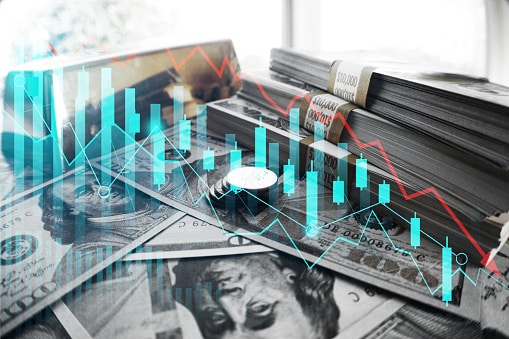Understanding the Impact on Trading and Investment Strategies
Gold and the US dollar have a complex and often inverse relationship in the trading market. As two of the most widely traded assets in the world, their interplay can have significant implications for investors and traders alike.
The US dollar is the world’s reserve currency, and is used in most international trade transactions. This means that many countries hold significant reserves of US dollars, and the strength or weakness of the US dollar can have major implications for global trade and economic stability. On the other hand, gold has traditionally been seen as a safe-haven asset, providing a store of value during times of economic uncertainty and political instability.
One of the key drivers of the relationship between gold and the US dollar is the role of the US Federal Reserve. The Federal Reserve is responsible for setting monetary policy in the United States, which includes setting interest rates. When interest rates are low, investors may turn to gold as an alternative investment, as it does not pay interest or dividends like other assets. Conversely, when interest rates are high, investors may prefer assets that offer a higher return, such as bonds or stocks.
Another factor that affects the relationship between gold and the US dollar is inflation. Inflation erodes the purchasing power of currency, making it less valuable over time. As a result, investors may turn to gold as a hedge against inflation, as its value tends to rise during periods of high inflation. However, when inflation is low or stable, investors may be less likely to invest in gold.
The relationship between gold and the US dollar is also influenced by geopolitical events and market sentiment. During times of political or economic uncertainty, investors may flock to safe-haven assets like gold, driving up its price. This can be seen in periods of heightened geopolitical tension, such as during the US-Iran conflict in early 2020. Conversely, during times of economic growth and stability, investors may be more likely to invest in riskier assets like stocks, causing gold prices to fall.
In recent years, the relationship between gold and the US dollar has become more complex due to the rise of cryptocurrencies like Bitcoin. Cryptocurrencies are often seen as an alternative to traditional assets like gold and the US dollar, as they are decentralized and not subject to the same monetary policies and regulations. As a result, the emergence of cryptocurrencies has created a new dynamic in the trading market, with investors now having more options for where to invest their money.
Despite the complexities of the relationship between gold and the US dollar, there are a number of strategies that traders can use to take advantage of market trends. One common strategy is to trade based on technical analysis, which involves using charts and other tools to identify patterns in price movements. For example, traders may use moving averages or trend lines to identify when gold prices are likely to rise or fall.
Another strategy is to trade based on fundamental analysis, which involves analyzing economic and geopolitical factors that could affect the price of gold and the US dollar. For example, traders may monitor news headlines and economic data releases to identify potential opportunities for investment.
Overall, the relationship between gold and the US dollar is complex and multifaceted, with a number of factors influencing their interplay in the trading market. By understanding these factors and using a variety of trading strategies, investors and traders can take advantage of market trends and potentially generate significant returns on their investments.




